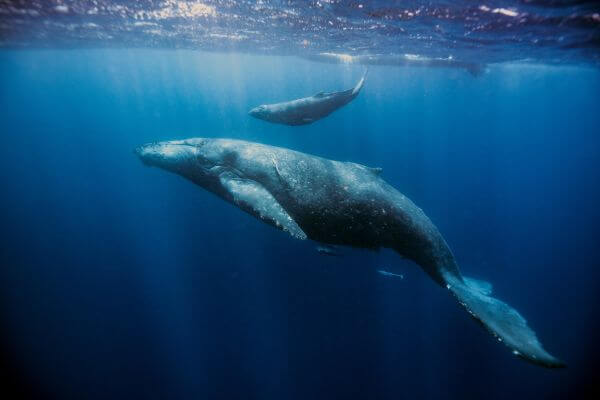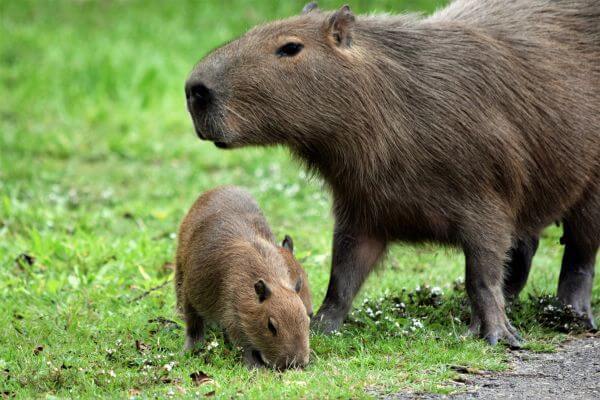Discover amazing animal facts you probably didn’t know.
The Fascinating World of Wild Animals

Wild animals are incredible creatures with surprising behaviors. Many species possess unique abilities. For example, octopuses can change color to camouflage themselves. Additionally, they can solve complex problems. Another example is the cheetah, the fastest land animal, reaching speeds of up to 120 km/h. Knowing these animal facts enriches our understanding of the natural world.
Elephants, on the other hand, have exceptional memories. They can remember paths and water sources for many years. Additionally, they are known for their strong social bonds. They live in groups and demonstrate emotional behaviors. For example, elephants cry and show signs of mourning when a group member dies. These characteristics make elephants truly fascinating and complex animals.
Dolphins are another example of intelligent and social animals. They communicate through a variety of sounds and even identify themselves by name. Dolphins also exhibit cooperative and empathetic behaviors. For example, they help injured group members reach the surface to breathe. Additionally, their ability to learn and imitate human behaviors is impressive. These animal facts show how incredibly adaptable they are.
Positive Reinforcement Dog Training

Training dogs using positive reinforcement is highly effective. This method is based on rewarding desired behaviors. For example, when teaching a command, the dog receives a treat or affection when they perform correctly. This encourages the dog to repeat the behavior. Additionally, it creates a bond of trust between the owner and the animal. It’s a technique that promotes a positive learning environment.
Another benefit of positive reinforcement is the reduction of stress in the dog. Punitive methods can cause fear and anxiety, making learning difficult. In contrast, positive reinforcement makes the training process more enjoyable for the dog. They associate training with positive experiences, which increases their motivation to learn. Therefore, it is a more humane and effective approach to dog training.
Moreover, positive reinforcement can be applied to various situations. From basic commands like sit and lie down to more complex behaviors like tricks and specific skills. Consistent use of this technique results in a more obedient and happy dog. Training with positive reinforcement also strengthens the bond between the dog and the owner. It is a practice recommended by animal behavior experts.
Marine Animal Facts
Marine animals are equally fascinating. The mimic octopus, for example, can imitate the appearance and movements of other marine animals. This ability helps it avoid predators. Additionally, humpback whales undertake incredible migrations, traveling thousands of kilometers between feeding and breeding areas. These marine animal facts highlight the diversity and complexity of ocean life.
Another interesting example is the seahorse. Unlike most animals, it is the male that carries and gives birth to the young. They have a special pouch for this purpose. Additionally, seahorses are known to form strong pair bonds, often staying with the same partner for life. These particularities make seahorses unique and fascinating creatures.
Sharks are also surprising animals. Some can detect electric fields generated by other living beings, which helps them hunt. Great white sharks, for example, can sense the heartbeat of prey. Additionally, they have an efficient body structure that makes them excellent swimmers. Learning these marine animal facts enhances our appreciation of underwater life.
The Secret Life of Nocturnal Animals
Nocturnal animals have unique adaptations for living in the dark. Many have enhanced night vision. For example, owls have large eyes that capture more light, allowing them to see better at night. Additionally, their feathers are adapted for silent flight, helping them capture prey undetected. These adaptations make owls efficient and fascinating nocturnal predators.
Another example of a nocturnal animal is the bat. They use echolocation to navigate and hunt in the dark. By emitting high-frequency sounds, bats can map their surroundings. Additionally, they are important for the ecosystem as they pollinate plants and control insect populations. These nocturnal animal facts show how well adapted they are to night life.
Domestic cats also exhibit interesting nocturnal behaviors. They have excellent night vision thanks to a reflective layer in their eyes called the tapetum lucidum. This allows cats to see in low light. Additionally, they are more active at night, displaying hunting and exploring behaviors. Understanding these nocturnal animal facts helps us appreciate their unique skills and behaviors.
Social Behaviors of Group Animals
Group animals exhibit fascinating social behaviors. Wolves, for example, live in packs with well-defined hierarchies. Each pack member has a specific role. Additionally, communication among wolves is sophisticated, using vocalizations, facial expressions, and body postures. These social behaviors help maintain group cohesion and efficiency.
Ants are another example of social animals. They live in organized colonies with different castes such as queens, workers, and soldiers. Each caste has specific functions to ensure the colony’s functioning. Additionally, ants communicate through pheromones, coordinating activities like foraging and defense. These group animal facts show the complexity of animal societies.
Dolphins, as previously mentioned, are also highly social. They live in groups called pods and exhibit cooperative and empathetic behaviors. For example, they help injured members and protect each other from predators. Dolphin communication is complex, using a variety of sounds and gestures. These social behaviors highlight the intelligence and adaptability of dolphins.
Predator Hunting Techniques
Predators have impressive hunting techniques. For example, lions hunt in groups to take down large prey. Each pride member plays a role in the hunt. This increases the chances of success. Additionally, lions use strength and strategy to corner their prey. These behaviors make lions formidable and efficient predators.
Spiders also have fascinating hunting methods. Many species weave complex webs to catch prey. The webs are made of strong and sticky silk that immobilizes insects. Additionally, some spiders, like tarantulas, actively hunt their prey, ambushing them in surprising ways. These hunting techniques show the diversity of strategies used by predators.
Eagles, on the other hand, are masters of aerial hunting. They have sharp vision, allowing them to spot prey from long distances. Additionally, eagles have powerful talons to capture and hold their prey while flying. These birds of prey use speed and precision to hunt successfully. The hunting techniques of eagles highlight the adaptability and efficiency of predators in the animal kingdom.
Survival Strategies in the Animal Kingdom
Animals have developed incredible strategies for survival. For example, the chameleon changes color to camouflage itself. This ability helps avoid predators and capture prey. Additionally, the chameleon can move its eyes independently, increasing its peripheral vision. These adaptations make the chameleon a master of camouflage and survival.
Another example is the sea urchin, which has spines for defense. These spines are used for both protection and locomotion. Additionally, some sea urchins have venomous substances in their spines, deterring predators. These characteristics make sea urchins well adapted to the marine environment. They exemplify how defense can be crucial for survival.
Arctic foxes also have notable adaptations. They have thick fur that changes color with the seasons. In winter, the fur is white, providing camouflage in the snow. In summer, it becomes brown, allowing them to hide in the tundra. Additionally, Arctic foxes have excellent hearing, helping them detect prey under the snow. These survival strategies show the incredible adaptability of animals.
Dog Training: Animal Facts
Dog training is an enriching process. Animal facts, like the ability of dogs to learn commands, make training fascinating. Using positive reinforcement, dogs can learn a variety of behaviors. This technique is based on rewarding the dog for desired behaviors, promoting pleasant and effective learning.
Additionally, training strengthens the bond between the dog and the owner. Training a dog creates clear communication and mutual trust. Trained dogs are more obedient and happy. Animal facts show that dogs that receive regular training are less likely to develop behavioral problems. This results in a harmonious and satisfying coexistence.
Training also benefits the dog’s mental health. Learning new commands and tricks keeps the dog mentally stimulated. Additionally, regular exercise during training helps keep the dog physically active. These animal facts demonstrate the importance of training in a dog’s life. Training a dog not only improves behavior but also the animal’s quality of life.
Animal Intelligence: Animal Facts

Animal intelligence is a fascinating field of study. Many animals exhibit complex behaviors and surprising abilities. For example, crows are known for their problem-solving skills. They use tools to obtain food and can even plan future actions. These animal facts highlight the remarkable intelligence of crows.
Another example is the dolphin, which has a highly developed brain. They communicate through a complex language of sounds and gestures. Additionally, dolphins demonstrate empathy and cooperation, helping injured group members. Studies show they can recognize themselves in mirrors, indicating self-awareness. These animal facts reveal the impressive intelligence of dolphins.
Dogs are also intelligent animals capable of learning a variety of commands and tricks. Using positive reinforcement methods, it is possible to train dogs to perform specific tasks. They can even learn to identify different objects and respond to verbal and gestural commands. These skills make dogs loyal companions and useful in various situations. Animal intelligence is an area full of surprising discoveries.
Animal Adaptability to the Environment

Adaptability is an essential characteristic for animal survival. For example, chameleons change color to camouflage themselves in the environment. This ability helps avoid predators and capture prey. Additionally, many chameleons can move their eyes independently, improving peripheral vision. These animal facts highlight their incredible adaptability.
Another example of adaptability is the polar bear. They have thick fur and a layer of fat that keeps them warm in the extreme cold of the Arctic. Additionally, polar bears have large, furry paws that facilitate movement on snow and ice. These adaptations allow polar bears to survive in one of the most hostile environments on the planet.
Coral reef fish also show notable adaptability. Many have vibrant colors that help them camouflage among the corals. Additionally, some fish species can change sex in response to environmental conditions. These characteristics allow them to thrive in dynamic and
varied ecosystems. Animal adaptability is a testament to the diversity and resilience of life on Earth.
Conclusion: The Importance of Knowing Animal Facts
Knowing animal facts enriches our understanding of the natural world. Through positive reinforcement dog training, we learn the importance of humane and effective methods. This knowledge promotes a healthy and trusting relationship between owners and their pets, improving animal behavior and quality of life.
Additionally, exploring animal facts reveals the incredible adaptations and skills developed over evolution. From the enhanced night vision of owls to the intelligence of dolphins, these facts inspire admiration and respect for animal life. Understanding these aspects helps us value and protect biodiversity.